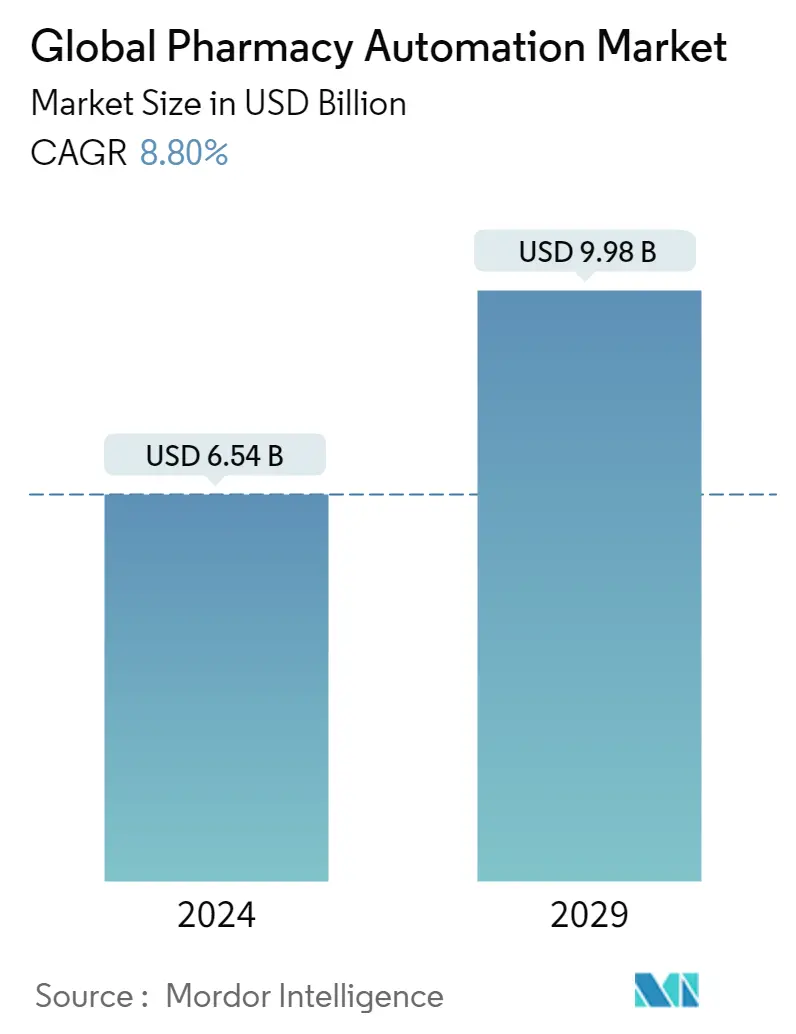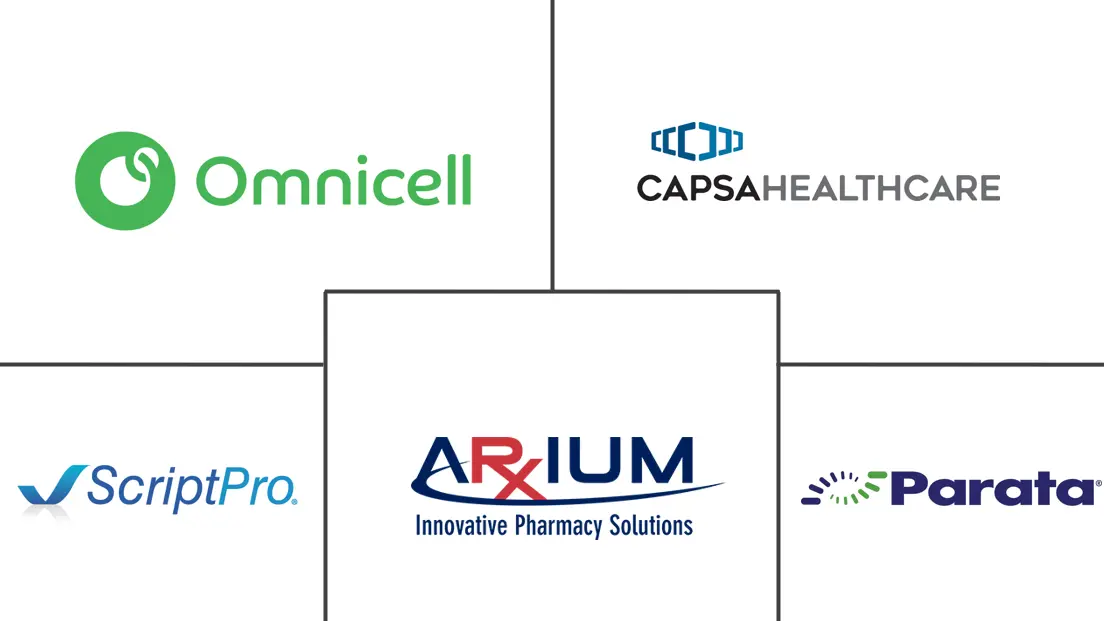Market Size of Global Pharmacy Automation Industry

| Study Period | 2021 - 2029 |
| Market Size (2024) | USD 6.54 Billion |
| Market Size (2029) | USD 9.98 Billion |
| CAGR (2024 - 2029) | 8.80 % |
| Fastest Growing Market | Asia Pacific |
| Largest Market | North America |
Major Players
*Disclaimer: Major Players sorted in no particular order |
Need a report that reflects how COVID-19 has impacted this market and its growth?
Pharmacy Automation Market Analysis
The Global Pharmacy Automation Market size is estimated at USD 6.54 billion in 2024, and is expected to reach USD 9.98 billion by 2029, growing at a CAGR of 8.80% during the forecast period (2024-2029).
The COVID-19 pandemic impacted the pharmacy automation market. For instance, an article published by the International Conference on Communication Systems & Networks in January 2021 reported that the implementation of automated pharmacy systems in primary healthcare centers or hospitals in rural areas of middle and lower-income countries during the COVID-19 pandemic helped people access basic and advanced healthcare facilities properly, create awareness of various diseases, control the spread of pandemics and considerably bring down the mortality rates. Thus, the COVID-19 pandemic increased the demand for pharmacy automation. The market is expected to witness significant growth over the forecast period due to the benefits associated with pharmacy automation, such as an electronic process of distributing, sorting, packaging, and counting prescription medications and improving efficiency by minimizing labor costs.
The factors driving the growth of the studied market are the increasing demand for specialty drug prescription filling solutions, the rising need to minimize medication error,s and the decentralization of pharmacies. There has been a rising incidence of chronic and life-threatening diseases and an increasing dispensation of medications. For instance, an article published by the British Medical Journal in June 2021 reported that an estimated 237 million medication errors occurred in the NHS in England every year, and avoidable adverse drug reactions (ADRs) caused hundreds of deaths. Hence, hospitals and pharmacies are adopting new pharmacy automation technologies to reduce operating costs while improving patient safety.
In addition, the increasing geriatric population in Japan is also contributing to market growth. For instance, the 2022 statistics published by the United Nations Population Fun, reported that in Japan, a large proportion of the living population was aged 15-6,daccountingd for 59% in 2022. In addition, as per the same source, 29% of the population was 65 years and above in 2022. The geriatric people are more prone to developing chronic diseases such as cardiovascular diseases and neurological disorders, and this can raise the demand for effective therapeutic cs, which further accelerates the need for medications and thus drives the need for pharmacy automation.
Also, these pharmacy automation systems offer several benefits to the patients, pharmacies, and criticalhealthcare team membersm. Automated systems have inordinate cost-effective and safety benefits, and they rationalize pharmacy operations by improving data workflow. All these technological innovations have facilitated pharmacies to remain competitive in a rapidly evolving industry and have benefitted patients and doctors in various ways.
Moreover, technological developments by the key market players are also driving the growth of the studied market. For instance, in September 2021, Deenova reported winning its first-ever contract in Germany and parallelly established Deenova operations in Europe's largest GDP healthcare market. This outstanding contract award includes delivery, installation, and full service/support for 3 all-in-1 packaging robots, 34 all-in-1 station medication dispensing robots, and 72 all-in-1 trolleys with secure bed-side verification at MarieHospitalal Gelsenkirchen, an operating company in the service network of St. Augustinus Gelsenkirchen GmbH.
However, a slight redundancy in the adoption of automation in pharmacies in underdeveloped and developing regionswill likelyo impede market growth over the forecast period.
